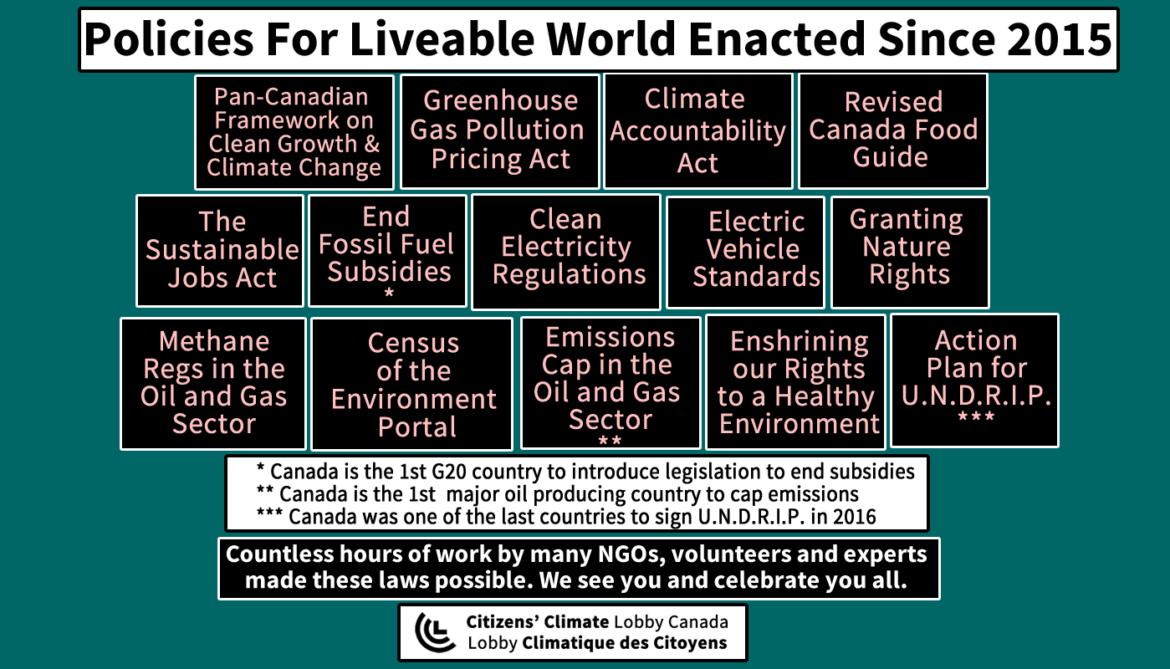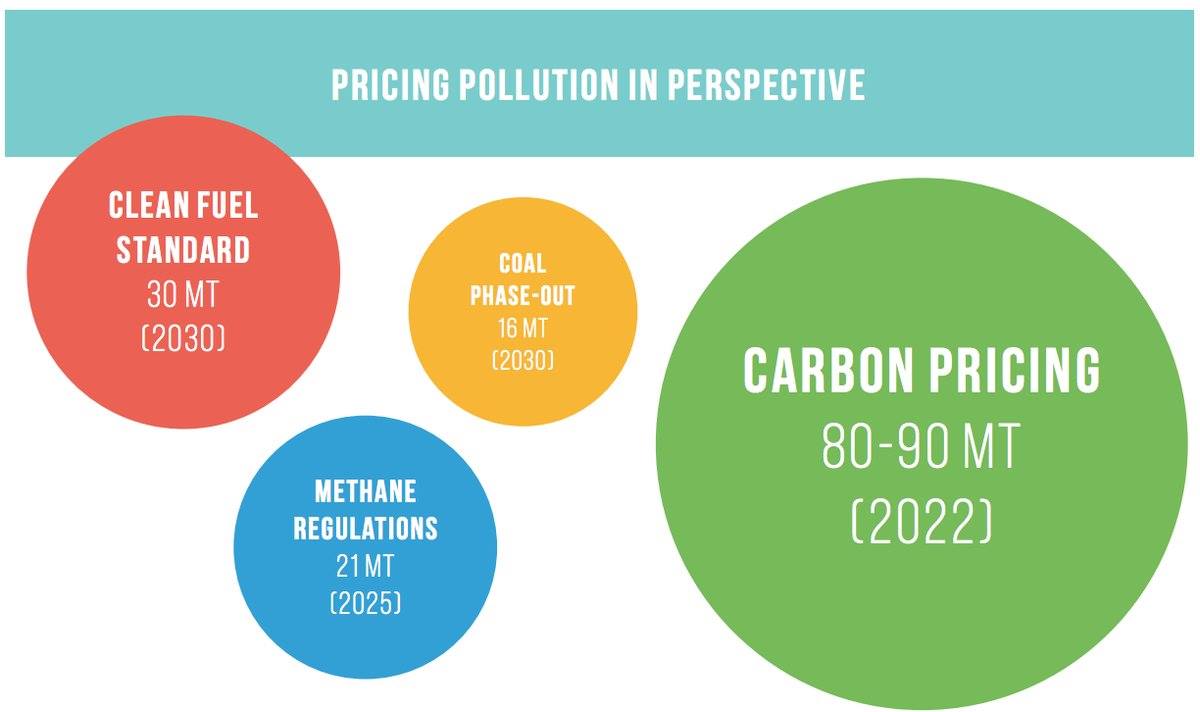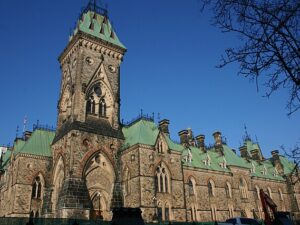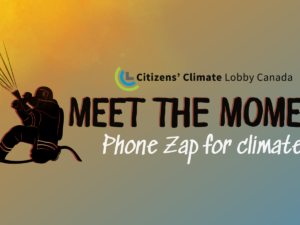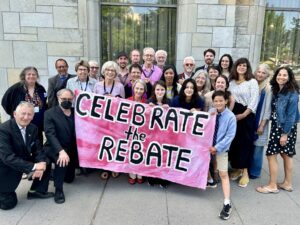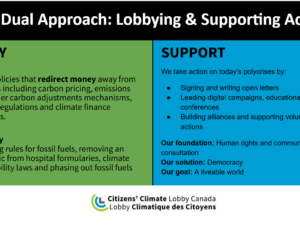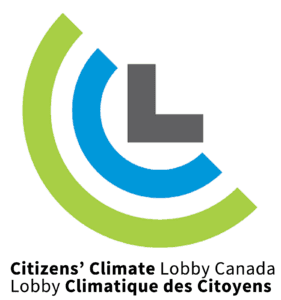IMAGE SOURCE: Estimated Results Of The Federal Carbon Pollution Pricing System In a nutshell: As we approach Election 2025, youths will be watching and urging us to vote for the climate. Policy persistence is crucial for advancing on the climate crisis. Everyone should inquire with local candidates about their party’s climate plan and the evidence supporting its effectiveness in reducing fossil fuel pollution in alignment with science, while ensuring fairness and avoiding undue burden on women, children, people living in poverty, or any group disproportionately impacted by fossil fuel pollution. Here are policies and programs that have been enacted and created since 2015: 1. Pan-Canadian Framework on Clean Growth and Climate Change (2015)*: 2. Greenhouse Gas Pollution Pricing Act (2018)**: 3. Revision of Canada’s Food Guide (2019) 4. Climate Accountability Act (2021)** 5. Cap on Emissions in the Oil and Gas Sector** (2023 and in final stages of being written into law): 6. Legislation to End Fossil Fuel Subsidies** (2023) 7. Clean Electricity Regulations** (2024 and in final stages of being written into law): 8. Enshrining the Right to a Healthy Environment (2023): 9. Granting Nature Rights (2022) 10. The United Nations Declaration of the Rights of Indigenous Peoples Action Plan (2023): 11. The Electric Vehicle Availability Standard (2023) 12. Methane Regulations in the Oil and Gas Sector (2018 and 2022) 13. Census of the Environment Portal ** Our volunteers support many actions that get us to a safe environment for all. They specifically lobbied their own MPs and educated their local citizenry about these specific policies. References:
https://www.canada.ca/content/dam/eccc/documents/pdf/reports/estimated-impacts-federal-system/federal-carbon-pollution-pricing-system_en.pdf
– Developed collaboratively with provinces, territories, and Indigenous peoples to achieve emissions reduction targets, foster economic growth, and enhance resilience to climate change. [1]
– Implemented to reduce greenhouse gas emissions and decrease income inequality. The policy also aims to address the gender pay gap and facilitate the decarbonization of the economy by making polluters pay. [2] In 2018, Environment and Climate Change Canada estimated that the carbon pricing policy would reduce emissions by 80-90 Mt by 2022 (see image above). In April 2021, Canadian Supreme Court Chief Justice Richard Wagner wrote for the majority of the judges regarding the legality of this policy that, “Climate change is real. It is caused by greenhouse gas emissions resulting from human activities, and it poses a grave threat to humanity’s future,” Wagner wrote. He described climate change as “a threat of the highest order to the country, and indeed the world.” The majority noted that global warming causes harm beyond provincial boundaries and that it is a matter of national concern under the “peace, order and good government” clause of the Constitution.
– Updated to align with planetary and human health goals, recommending a flexitarian diet emphasizing plant-based protein sources while allowing moderate consumption of meat, dairy, and fish. [4]
– Legislation focused on ensuring climate accountability and achieving net-zero emissions targets. [5]
– Established the first-ever cap on emissions in the oil and gas sector in Canada, signaling a significant step in climate policy. [6]
– Introduced legislation to phase out inefficient fossil fuel subsidies, making Canada the first G20 country to do so. [7]
– Regulations aimed at promoting the transition to cleaner electricity sources. [8]
On June 13, 2023, Bill S-5, Strengthening Environmental Protection for a Healthier Canada Act became law. With this Bill, the Government of Canada recognizes that every individual in Canada has a right to a healthy environment as provided under the Canadian Environmental Protection Act, 1999 (CEPA). [9]
– Recognizing the rights of nature, including granting legal personhood to certain natural entities such as the Magpie River in Quebec. it’s part of a global, Indigenous-led campaign echoing the rights of nature movement, which aims to provide concrete protections for the natural landscape. In 2018, Colombia’s Supreme Court granted the Amazon—the world’s largest river—legal rights. [10]
Canada officially endorsed the declaration in August 2016, and on June 21, 2023, released the United Nations Declaration on the Rights of Indigenous Peoples Act Action Plan, signaling commitment to Indigenous rights. [11]
The targets begin for the 2026 model year, with a requirement that at least 20 percent of new light-duty vehicles offered for sale in that year be ZEVs. The requirements increase annually to 60 percent by 2030 and 100 percent for 2035. [12]
Overall, the federal and provincial methane regulations alone are modelled to achieve methane emission reductions of 39% by 2025, relative to 2012 levels. [13]. Current measures that were designed to achieve a reduction of 40–45% below 2012 levels by 2025 will not be sufficient to meet Canada’s new methane commitment to achieve at least a 75% reduction in oil and gas sector methane emissions by 2030, relative to 2012 levels. [14]
Learn about the Census of Environment (CoE), find our latest releases, data publications and reference material. Check out their mapping tools or download their geospatial files!
* Our volunteers made hundreds of evidence-based submissions and gave presentations at numerous consultations during the development of the PanCanadian Framework on Clean Growth and Climate Change
1. Pan-Canadian Framework on Clean Growth and Climate Change https://www.canada.ca/en/services/environment/weather/climatechange/pan-canadian-framework.html
2. Greenhouse Gas Pollution Pricing Act
https://laws-lois.justice.gc.ca/eng/acts/G-11.55/index.html
3. Supreme Court full decision text:
https://decisions.scc-
4. Canada’s Food Guide Update
https://canada.citizensclimatelobby.org/laser-talk-3/
5. Climate Accountability Act
https://www.canada.ca/en/environment-climate-change/news/2021/06/government-of-canada-legislates-climate-accountability-with-first-net-zero-emissions-law.html
6. Cap on Emissions in the Oil and Gas Sector
https://www.canada.ca/en/services/environment/weather/climatechange/climate-plan/oil-gas-emissions-cap.html
7. Legislation to End Fossil Fuel Subsidies
https://www.canada.ca/en/environment-climate-change/news/2023/07/government-of-canada-delivers-on-key-climate-commitment-to-phase-out-inefficient-fossil-fuel-subsidies.html
8. Clean Electricity Regulations
https://www.canada.ca/en/services/environment/weather/climatechange/climate-plan/clean-electricity-regulation.html
9. Right to a Healthy Environment
https://www.canada.ca/en/environment-climate-change/services/canadian-environmental-protection-act-registry/right-to-healthy-environment.html
10. Granting Nature Rights
https://www.nationalgeographic.com/travel/article/these-rivers-are-now-considered-people-what-does-that-mean-for-travelers
11. Signing onto the United Nations Declaration of the Rights of Indigenous Peoples https://www.justice.gc.ca/eng/declaration/index.html
12. Canada’s Electric Vehicle Availability Standard (regulated targets for zero-emission vehicles)
https://www.canada.ca/en/environment-climate-change/news/2023/12/canadas-electric-vehicle-availability-standard-regulated-targets-for-zero-emission-vehicles.html
13. Regulations Respecting Reduction in the Release of Methane and Certain Volatile Organic Compounds (Upstream Oil and Gas Sector)
https://laws-lois.justice.gc.ca/eng/regulations/SOR-2018-66/index.html
14. Canada Gazette, Part I, Volume 157, Number 50: Regulations Amending the Regulations Respecting Reduction in the Release of Methane and Certain Volatile Organic Compounds (Upstream Oil and Gas Sector)
https://www.gazette.gc.ca/rp-pr/p1/2023/2023-12-16/html/reg3-eng.html
15. Census of the Environment Portal
https://www.statcan.gc.ca/en/census-environment
LASER TALK: Climate Policies enacted in Canada since 2015
Home » CCL Canada News » LASER TALK: Climate Policies enacted in Canada since 2015


